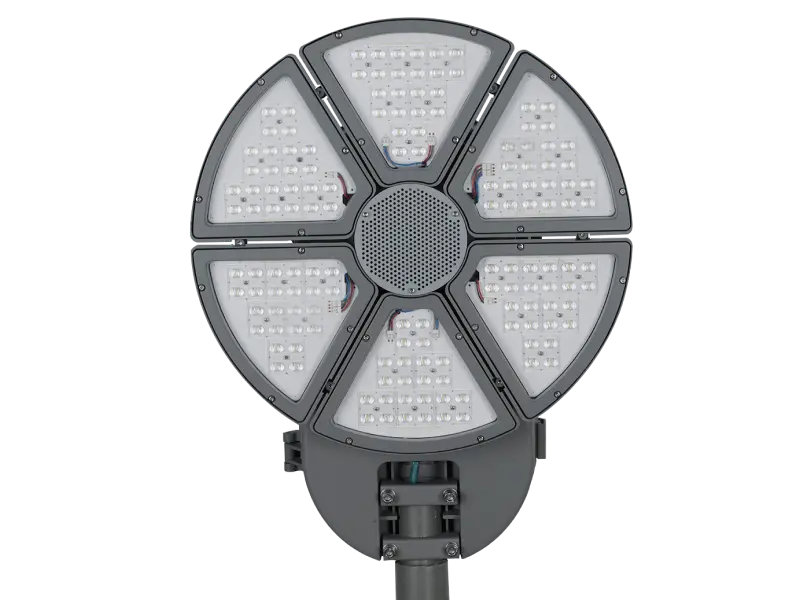Artificial lights vary in form and function. But among all the available lighting solutions, high mast lighting systems stand tall — literally and figuratively. The benefits of high mast lighting are well-known. Alas, designing an effective high mast lighting system is complex. This process requires both technical expertise and careful planning to solve problems creatively. This article will explore the intricacies of high mast lighting design. Read on for more.
High Mast Lighting Design
The most important detail of a high mast lighting design is for the fixture to brighten large areas. The distribution of light must be even. In addition, there must be a reduction in costs, energy consumption, and light pollution.
To balance these requirements, a designer must have an in-depth understanding of lighting principles, structural engineering, and electrical systems. Moreover, they must consider the specific needs of each project.
Said projects could include designing a high mast lighting fixture for a highway, a massive sports complex, or an airport runway. As you can imagine, the high mast lights for these areas will serve different purposes. Hence, the need for a calculated design.
1. Site Analysis:
The first step in any high mast lighting design project is a thorough site analysis.
During this phase, designers will examine the area’s topography, existing structures, and environmental factors. They will also account for any local regulations, concerns over light pollution, and other unique requirements for the space.
For instance, port facilities require specialized lighting for ships to safely navigate the waters. On the other hand, high mast lights on busy highways focus on providing drivers with consistent illumination.
2. Determining the number and placement of poles:
After analyzing the site, the next step involves choosing the perfect number and placement of high mast poles. This process involves complex calculations and modeling to ensure uniform light spread across the area.
Luckily, technology makes things more convenient. Designers can observe how light will spread from the fixtures by using special software to create photometric layouts. These simulations help to identify potential dark spots or areas with excessive brightness. As a result, designers can make all necessary corrections before construction begins.
3. Height:
The height of the mast is another crucial factor in the design process. Taller masts can brighten large areas with fewer light fixtures. However, due to their length, they need robust foundations and face strict regulations.
Alternatively, shorter masts are more cost-effective and easier to maintain. But you’ll need to mount more fixtures to achieve the desired coverage.
Therefore, a high mast lighting design must weigh these trade-offs to give the best solution for a project.
4. Selecting the right luminary:

This is perhaps the most critical aspect of a high mast lighting design.
Luminaries, in the context of high mast lighting, are those light fixtures or units you see at the top of the light poles. It is the complete lighting package in that it includes;
- The lamp or bulb (usually LED systems)
- The reflector that directs the light
- The housing that protects all the components
- The lenses and diffusers that help to shape the light beam
With LED technology on the rise, designers now have access to many high-efficiency and lasting fixtures. They consider the light output, beam angle, and color temperature when choosing luminaries.
To ensure the installation remains intact, designers also check additional factors. These include the fixture’s strength and resistance to environmental factors.
Other Key Considerations
1. Glare and Light Trespass:
One of the challenges of high mast lighting design is reducing glare and light trespass. Glare is a serious issue for road users and pilots on the runway. To address this problem, designers use cut-off fixtures to direct light downwards and reduce pollution.
They also use shields to control light spread and prevent it from spilling into unwanted areas.
2. Structural Design:
Another factor designers consider is the structural design of the high mast poles themselves. These tall structures withstand harsh weather conditions day in and day out. Therefore, to prevent mishaps, designers ensure the poles and their foundations are extra sturdy. This allows the high mast lighting fixture to resist external stresses without compromising safety or performance.
In addition, they factor in the weight of the luminaries and any additional equipment in the design. These include cameras and communication antennae that may be mounted on the masts.
3. Energy Efficiency:
Our world is shifting towards the use of sustainable technology. As a result, a high mast lighting design without a plan to reduce energy consumption is improper in modern society.
To create energy-efficient models, designers use advanced control systems that dim the lights during low traffic. These systems can sense the light conditions of the surrounding areas. Hence, they can reduce or increase light output based on the time of day.
High Mast Lighting Design Calculations
The processes involved in high mast lighting design aren’t simply guesswork. Designers have to calculate every factor to its most precise detail. These calculations form the backbone of any high mast lighting system.
1. Input Voltage:
The first thing a designer considers in a high mast light is its input voltage. High mast lighting systems operate from 120V to 277V at 50Hz to 60Hz.
This is a simple yet crucial detail because the input voltage of a mast determines if it is suitable for a particular project.
2. Project Location:
The location of a project plays an important role in high mast lighting design calculations. Choosing a location isn’t about picking a “good-looking” spot to mount a high mast pole. Instead of making careless assumptions, designers gather information about the target region. They use the location of these areas to assess the current feeds and the most applicable voltage.
3. Illumination Standards:
These guide the calculations for high mast lighting designs. Illumination standards guarantee the safety, functionality, and efficiency of a mast.
For instance, an airport will require different illumination standards from a construction site. These standards include the lux levels, pole height, and uniformity. Designers must know how to translate these standards into practical light solutions.
